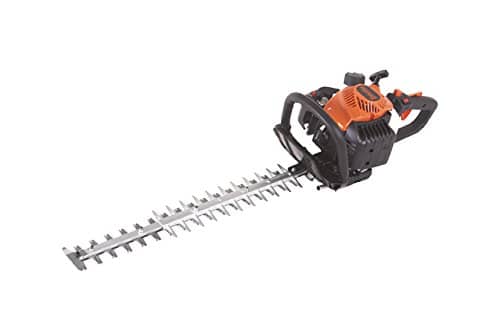An uneven lawn can be a safety hazard and detract from the overall appearance of your outdoor space. In this article, we will guide you through the process of leveling your lawn, including assessing the severity of the unevenness and implementing different methods based on the level of unevenness.
Key Takeaways:
- Assess the severity of the unevenness in your lawn before starting the leveling process.
- For mild unevenness, consider using a topdressing mix of topsoil, sand, and compost.
- For moderate unevenness, use a leveling rake and grass seed to level the surface and promote grass growth.
- If you have severe unevenness, it may be best to consult a professional landscaper for excavation and regrading.
- An uneven lawn can lead to poor aesthetics, tripping hazards, and other issues, so it’s important to address and level it.
Assessing the Severity of Unevenness
Uneven lawns can be categorized into three levels based on the severity of the unevenness: mild, moderate, and severe. Mild unevenness consists of small depressions or bumps scattered across the lawn, while moderate unevenness involves more noticeable variations in the surface. Severe unevenness is characterized by substantial variations in the contour of the lawn. The severity of the unevenness will determine the level of effort and intervention required to level the lawn.
If you’re unsure which category your lawn falls into, take a walk around your yard and carefully observe the smoothness of the surface. Pay attention to any depressions, lumps, or uneven areas. By identifying the severity of the unevenness, you can develop an appropriate plan of action to achieve a level and even lawn.
How to Level Mild Unevenness
If you have mild unevenness in your lawn, you can easily level it yourself by applying a topdressing mix. Start by preparing a mixture of topsoil, sand, and compost. Spread the mixture over the depressions in your lawn and use a rake to smooth it out, matching the surrounding contours.
If necessary, you can use a lawn roller to lightly compact the soil, ensuring a more even surface. This will help to further level the mild unevenness in your lawn.
To restore the appearance of your lawn and encourage new growth, consider overseeding or laying new sod in areas where the leveling process removed existing grass. This will ensure a seamless transition and a uniform appearance after the leveling process is complete.
Water the leveled areas to help the soil settle and promote healthy grass growth. Proper hydration is essential for the success of the leveling process.
By following these steps and utilizing topdressing, leveling mix, and a lawn roller, you can easily level mild unevenness in your lawn, creating a more visually appealing and uniform outdoor space.
How to Level Moderate Unevenness
When dealing with moderate unevenness in your lawn, it’s still possible to level it yourself, although it may require a bit more effort. Follow these steps to achieve a level surface:
- Start by preparing a mixture of topsoil and sand in a wheelbarrow or a large container. This combination of materials will help fill in and level out the divots and sunken areas in your lawn.
- Spread the topsoil and sand mixture generously over the uneven areas, ensuring that you cover the divots and sunken spots completely.
- Use a shovel to remove any excess soil and create an even surface. Pay attention to high spots or bumps and redistribute the soil accordingly to achieve a level lawn.
- Grab a leveling rake and gently distribute the topsoil and sand mixture across the lawn. The leveling rake will help you even out the surface by smoothing the soil and blending it with the surrounding areas.
- If necessary, use a lawn roller to lightly compact the soil. This step will promote stability and help prevent future divots or depressions.
- In areas where the leveling process removed existing grass, sprinkle grass seed or lay new sod to promote regrowth and a lush lawn.
- Afterward, it’s essential to water the leveled areas regularly to aid in soil settling and encourage healthy grass growth.
By following these steps, you can successfully level moderate unevenness in your lawn, ensuring a smooth and cohesive outdoor space.
How to Level Severe Unevenness
Severe unevenness in your lawn may require the expertise of a professional landscaper. Hiring a professional landscaper ensures that the severity of the unevenness is thoroughly assessed and a tailored solution is developed. They have the necessary knowledge, experience, and specialized equipment to tackle the challenges associated with severe unevenness.
Addressing severe unevenness often involves significant excavation and grading to create a level surface. A professional landscaper will carefully evaluate the condition of your lawn and determine if major lawn renovation is necessary, which may include sod replacement or reseeding.
With their expertise, a professional landscaper will perform the necessary excavation to remove any excess soil or correct drainage issues. They will then proceed with grading the lawn to ensure a smooth and even surface. This process may involve reshaping the landscape and adjusting the contour of the land.
By entrusting the leveling process to a professional, you can be confident in achieving a level and beautiful lawn that enhances the overall appeal of your outdoor space.
Common Causes of an Uneven Lawn
An uneven lawn can be caused by various factors. Understanding the underlying cause of your lawn’s unevenness is important in addressing and effectively leveling your landscape.
- Settling Soil: Over time, the soil beneath your lawn can settle, creating depressions and uneven areas.
- Thatch Buildup: Excessive thatch, a layer of dead grass and debris that accumulates on the soil surface, can create an uneven lawn.
- Lawn Disease: Certain lawn diseases can cause patchy and uneven growth, leading to an uneven lawn.
- Tree Roots: Tree roots near the surface can disrupt the evenness of your lawn, causing bumps or depressions.
- Heavy Traffic: Areas of your lawn that experience heavy foot traffic can become compacted and uneven over time.
- Inadequate Lawn Care: Neglecting proper lawn care practices, such as mowing, watering, and fertilizing, can result in an uneven lawn.
- Extreme Weather Events: Severe weather conditions, such as heavy rainfall or drought, can contribute to an uneven lawn.
- Improper Grading: Incorrect slope or grading during lawn installation can lead to water pooling and unevenness.
- Subsurface Issues: Underground factors like rocks, tree stumps, or utility lines can cause unevenness in your lawn.
By identifying the specific cause of your lawn’s unevenness, you can implement targeted solutions to level and restore the aesthetic appeal of your outdoor space.
Problems Caused by an Uneven Lawn
An uneven lawn can have detrimental effects on both the aesthetic appeal and functionality of your outdoor space. Addressing the unevenness is crucial to avoid poor aesthetics, tripping hazards, mower damage, drainage issues, ineffective irrigation, uneven growth, reduced usability, weed and pest infestations, soil erosion, and decreased property value.
First and foremost, an uneven lawn can significantly impact the visual appeal of your landscape. With dips, bumps, and uneven contours, your yard may appear unkempt and poorly maintained, detracting from the overall beauty of your property.
Moreover, an uneven lawn poses potential tripping hazards for you, your family, and guests. The uneven surface can catch unsuspecting feet, leading to stumbles and falls. These accidents can result in injuries and even legal liabilities, making it essential to level your lawn and eliminate these hazards.
In addition, an uneven lawn can subject your mower to damage. The mower blades can hit protruding bumps or sink into depressions, causing mechanical issues. By leveling your lawn, you can prevent mower damage, ensuring smooth and efficient grass cutting.
Drainage issues are another problem commonly associated with uneven lawns. When the ground is not level, water can collect in certain areas, leading to soggy spots, poor drainage, and potential water damage to your property. Proper leveling allows water to flow freely and ensures effective water management, preventing these issues.
Furthermore, an uneven lawn can disrupt the irrigation process. Water may not distribute evenly across the surface, resulting in dry patches and overwatered areas. By leveling your lawn, you can achieve consistent irrigation and promote healthy grass growth.
The growth of your grass can also be affected by an uneven lawn. Uneven surfaces can create shaded areas, hindering sun exposure and impeding the growth of grass. Levelling your lawn ensures uniform sun exposure, allowing for even growth and a lush, green landscape.
Reduced usability is another consequence of an uneven lawn. Whether you enjoy hosting outdoor gatherings, playing sports, or simply relaxing in your yard, uneven ground can limit your enjoyment and use of the space. By leveling your lawn, you can maximize its usability and create a safe and enjoyable environment.
An uneven lawn also provides an ideal environment for weeds and pests. The irregular contours and pockets created by unevenness can trap debris, promote weed growth, and attract unwanted insects. Leveling your lawn eliminates these pockets and creates a less hospitable environment for weeds and pests.
Soil erosion can occur more easily on an uneven lawn. The inconsistent surface can lead to soil runoff during heavy rain or watering. This erosion can result in bare patches, nutrient loss, and compaction issues. Proper leveling mitigates the risk of soil erosion, allowing for healthier and more resilient grass cover.
Lastly, an uneven lawn can negatively impact your property value. Potential buyers or appraisers may view an uneven and poorly maintained yard as a sign of neglect and may perceive it as a costly problem to rectify. By leveling your lawn, you can maintain or enhance the value of your property and make it more attractive to prospective buyers.
“An uneven lawn can have detrimental effects on both the aesthetic appeal and functionality of your outdoor space.”
Don’t let poor aesthetics, tripping hazards, mower damage, drainage issues, and other problems ruin the beauty and functionality of your yard. Leveling your lawn is a key step in maintaining its health, safety, and aesthetic appeal.
What is the Best Way to Level My Lawn to Ensure Proper Watering?
To ensure proper watering frequency for lawn, the best way to level your lawn is to use a lawn roller or topdressing with a layer of soil. This will create a more even surface, allowing water to distribute evenly and avoid pooling in low spots.
Conclusion
Leveling your lawn is a vital step in maintaining its beauty, usability, and overall health. By accurately assessing the severity of the unevenness and implementing appropriate leveling techniques, you can achieve a level and even turf that enhances the aesthetic appeal of your outdoor space.
Whether you decide to take on the lawn leveling process yourself or seek professional assistance, it is crucial to address the unevenness. An uneven lawn not only detracts from the visual appeal but also poses safety risks, such as tripping hazards, and can contribute to mower damage and poor drainage.
With the help of this comprehensive lawn leveling guide, you now have the knowledge and tools to tackle the project efficiently. Evaluate the severity of the unevenness and follow the appropriate methods outlined for mild, moderate, or severe unevenness. Remember to water the leveled areas to promote soil settling and grass growth, and consider overseeding or laying new sod where necessary.
Don’t let an uneven lawn stand in the way of a perfect outdoor space. Take charge today, level your lawn, and enjoy the benefits of a flat and healthy turf.











